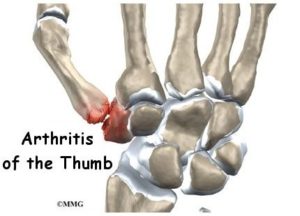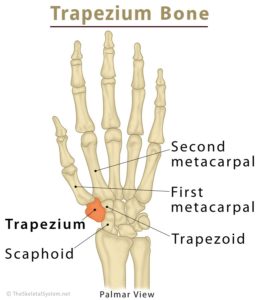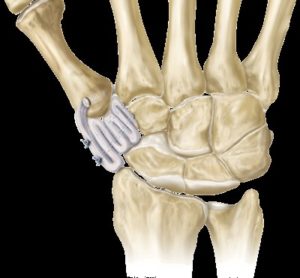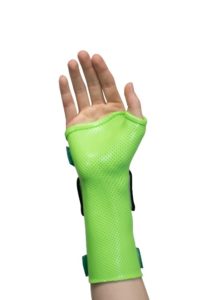Osteoarthritis at the base of thumb joint, known as the 1st CMC joint, is common and is often part of the aging process. Most people in their 30’s and 40’s will have signs of degeneration in this joint, however it may not become painful until later in life. The 1st CMC joint is highly mobile which makes it so functional. As a result of this mobility it is more at risk of degenerative changes, which is why it is one of the most common joints in the hand affected by osteoarthritis. Arthritis at the 1st CMC joint can lead to pain, reduced range of motion and reduced strength. Often people think there is nothing that can be done to help with their base of thumb pain, however this is not the case! Hand therapy can help reduce pain and improve function for arthritic thumbs, however if the degenerative changes progress to severe osteoarthritis surgery can be an option to help.
When should I consider surgery?
If your thumb is giving you trouble initially we recommend seeing a hand therapist to trial conservative management. Your hand therapist will be able to go through strategies to help manage your pain including splinting, exercises, joint protection strategies and provision of adaptive aids.
If the pain becomes unbearable and is impacting your daily function then sometimes surgery may be considered. Your hand therapist will be able to go through your options with you, and if needed refer you on to a surgeon who specialises in hand surgery.
What does the surgery involve?
There are numerous surgical procedures that can be used in the management of base of thumb osteoarthritis, however one of the most common is called a suspensionplasty (also known as CMC joint arthroplasty). This is an elective procedure that is done to relieve pain and restore function of the thumb.
This procedure typically involves cleaning out and reconstructing the arthritic joint. A small incision is made at the base of the thumb and some or all of the trapezium bone, which forms the base of the CMC joint, is removed. A tendon graft is often taken from the wrist and then used to help reconstruct and stabilise the joint. The remaining tendon is then rolled up and placed in the space where the trapezium used to sit to help suspend the thumb.


Post op rehab
After surgery you will see your hand therapist to commence the rehabilitation process. It is important to consider that the rehab following this procedure can be quite lengthy but results in good long-term pain relief and increased function. Your hand therapist will be essential in guiding you through the post op rehabilitation.
 Initially your hand therapist will fit you with a custom thermoplastic orthosis to immobilize and protect the reconstructed joint. Once the thumb has had adequate time to rest and heal, you will then work on a graded exercise program to work on regaining thumb mobility. Finally when the joint is stable and relatively pain free you will be guided through strengthening exercises to help get you back to using your hand normally. Your hand therapist will work closely with your surgeon to ensure the best possible outcome from your suspensionplasty rehab. Your hand therapist will also be able to educate you regarding activity modification and joint protection strategies to to help protect your new joint.
Initially your hand therapist will fit you with a custom thermoplastic orthosis to immobilize and protect the reconstructed joint. Once the thumb has had adequate time to rest and heal, you will then work on a graded exercise program to work on regaining thumb mobility. Finally when the joint is stable and relatively pain free you will be guided through strengthening exercises to help get you back to using your hand normally. Your hand therapist will work closely with your surgeon to ensure the best possible outcome from your suspensionplasty rehab. Your hand therapist will also be able to educate you regarding activity modification and joint protection strategies to to help protect your new joint.
If you are experiencing thumb pain, you can make an appointment with one of our therapists for a comprehensive assessment and to discuss your options.
